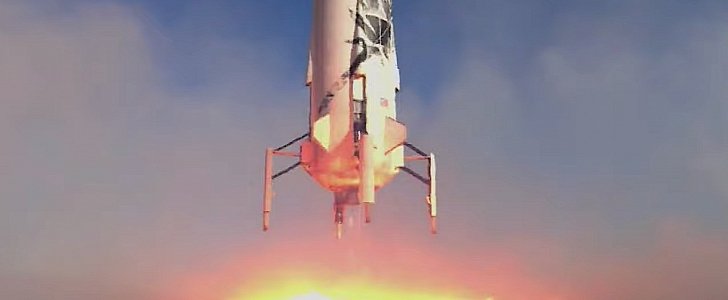On May 2nd, Blue Origin’s New Shepard rocket took to the skies once again, for the 11th time, carrying with it to orbit the biggest cargo to date: 38 different experiments, designed by groups from all over the world.
The spacecraft took off as scheduled from Blue Origin’s complex in West Texas, delivered the capsule carrying the experiments to the projected altitude and then returned to the ground. The booster of the rocket came back down seven minutes after takeoff, while the capsule carrying the experiments made it back in one piece 10 minutes after launch.
According to Blue Origin, the maximum ascent velocity achieved by the spacecraft was 2,217 mph (3,567 kph) and the top altitude reached by the capsule was 66 miles, or 106 km.
"A beautiful, beautiful launch of the booster and capsule today. Incredible," said during the live feed Ariane Cornell, Blue Origin director of astronaut and orbital sales. "This has been quite the morning."
Thursday’s launch was the fifth carried out with the same New Shepard rocket, as the hardware is being prepared to support crewed flights.
In the coming years, Blue Origin’s plans are to use the rocket for commercial purposes and make money by carrying tourists to the edge of space and bringing them safely back down. The company also eyes more important missions to the International Space Station and later to the Moon and Mars.
The New Shepard, named so after the first American astronaut in space, Alan Shepard, is the company’s workhorse as it prepares for the maiden flight of the true star of the lineup, the New Glenn.
New Shepard is a vertical take-off vertical landing rocket powered by a BE-3 engine, the first new liquid hydrogen-fueled rocket engine to be developed for production in America in over a decade. The unit is capable of generating 110,000 lbf of thrust.
According to Blue Origin, the maximum ascent velocity achieved by the spacecraft was 2,217 mph (3,567 kph) and the top altitude reached by the capsule was 66 miles, or 106 km.
"A beautiful, beautiful launch of the booster and capsule today. Incredible," said during the live feed Ariane Cornell, Blue Origin director of astronaut and orbital sales. "This has been quite the morning."
Thursday’s launch was the fifth carried out with the same New Shepard rocket, as the hardware is being prepared to support crewed flights.
In the coming years, Blue Origin’s plans are to use the rocket for commercial purposes and make money by carrying tourists to the edge of space and bringing them safely back down. The company also eyes more important missions to the International Space Station and later to the Moon and Mars.
The New Shepard, named so after the first American astronaut in space, Alan Shepard, is the company’s workhorse as it prepares for the maiden flight of the true star of the lineup, the New Glenn.
New Shepard is a vertical take-off vertical landing rocket powered by a BE-3 engine, the first new liquid hydrogen-fueled rocket engine to be developed for production in America in over a decade. The unit is capable of generating 110,000 lbf of thrust.






